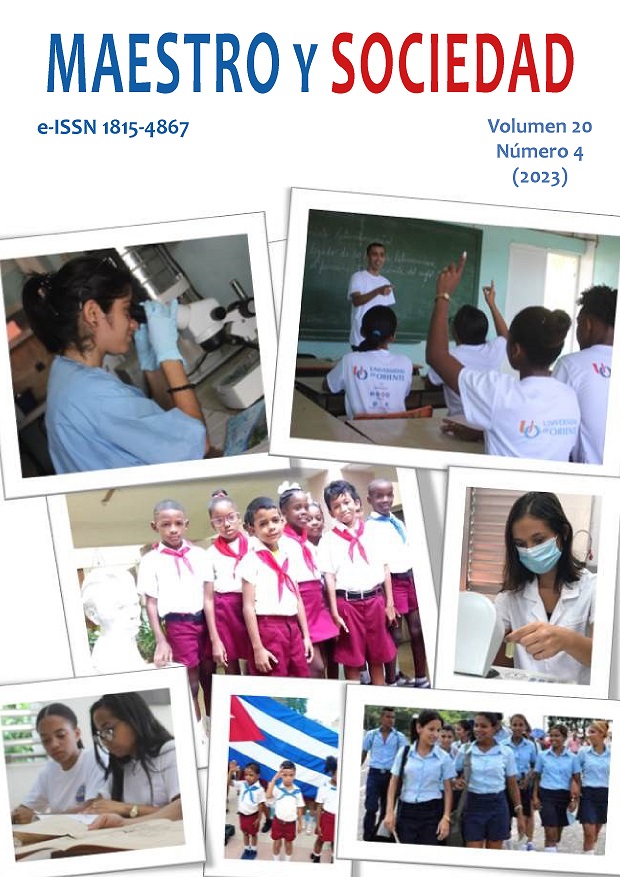Comparison of three tidal power plant schemes
Keywords:
tidal power plants, comparison, ocean thermal energy conversionAbstract
Ocean Thermal Energy Conversion or tidal energy, is a renewable source of energy based on the change in sea temperature with respect to depth. This temperature gradient can be used to drive a heat engine that generates useful work that is converted into electricity. The oceans capture the heat generated by solar radiation, which is why Ocean Thermal Energy Conversion systems are an almost unlimited source of energy dependent on the sun. The objective of this work is to theoretically compare three OTEC plant schemes in terms of operation and quantity of equipment. Materials and methods: For this, a bibliographic review is carried out and the optimal scheme for the conditions of Cuba is proposed, the open cycle scheme or Anderson cycle. Results: Three OTEC plant schemes reported in the literature were compared and, considering the operation and quantity of equipment, the open cycle or Anderson cycle scheme was selected as the optimal scheme for implementation on the Cuban coast. Discussion: It is considered that the Ocean Thermal Energy Conversion system scheme based on the Claude cycle presents the following disadvantages: it requires a working fluid for its operation, such as those mentioned; These working fluids are gases with a risk of explosion, such as propane, or greenhouse gases, such as freon, or toxic, such as ammonia; In case of escape of the working fluid, the production of electrical energy stops; and a storage medium is needed. Conclusions: Research on this topic given that tidal energy, according to the technological advances reported in the literature and operating plants in the world, aims to be one of the most constant and uninterrupted future technologies for generating ecological electricity compared to photovoltaics and wind.
References
Abreu Del Sol, M. C. (2021). Selección de sitios para la obtención de energía maremotérmica. [Tesis de Licenciatura. Instituto
Superior de Tecnologías y Ciencias Aplicadas, Universidad de La Habana]. https://www.researchgate.net/publication/365285118_
Seleccion_de_sitios_para_la_obtencion_de_energia_maremotermica_terrestre_utilizando_tecnologia_satelital
el compromiso público y la actitud energética. Revista Facultad de Ingeniería, 28(52), 27-42. http://www.scielo.org.co/
scielo.php?script=sci_arttext&pid=S0121-11292019000300027
Barragas Llanos, R. A., & Llanes Cedeño, E. A. (2020). La generación de energía eléctrica para el desarrollo
industrial en el Ecuador a partir del uso de las energías renovables. Universidad, Ciencia y Tecnología, 24(104), 36-46.
https://uctunexpo.autanabooks.com/index.php/uct/article/view/3
Chavarría Castillo, G. D., & Atúncar Prieto, C. A. (2023). Metaverso: mundo paralelo digital en la primera infancia.
Maestro y Sociedad, 20(3).
Cristo Doimeadios, A. (2021). Planta Conversora de Energía Térmica Marina con amoniaco. Fundamentos y
selección. [Tesis de fin de grado. Universidad de Holguín].
Delgado Mero, D. N. (2017). Estudio de prefactibilidad económica de la utilización de la energía maremotérmica
para la producción de energía eléctrica y agua dulce en las condiciones de las Islas Galápagos. [Tesis de fin de grado,
Universidad Laica Eloy Alfaro de Manabi].
García Huante, A., & Garduño Ruiz, E. P. (2022). Energía por Gradiente Térmico: Posible detonante para el
desarrollo de México. Ambiente y Agua, 61(1), 30-34. https://www.researchgate.net/profile/Alejandro-Garcia-Huante/
publication/358485813_Energia_por_Gradiente_Termico_Posible_detonante_para_el_desarrollo_de_Mexico/download
Gil Alba, R. (2017). Estudio sobre la implantación de la tecnología maremotérmica. [Tesis de Fin de Grado,
Universidad Carlos III de Madrid].
Herrera, J., Sierra, S., & Ibeas, A. (2021). Ocean Thermal Energy Conversion and other uses of deep Sea Water. A
Review. Journal of Marine Science and Engineering, 9(4). doi:https://doi.org/10.3390/jmse9040356
Monroy Marquez, D. A. (2017). Estudio de prefactibilidad para la generación de energía eléctrica mediante el
aprovechamiento del gradiente térmico entre las guas superficiales y las profundas de la zona marítima exclusiva de
Guatemala. [Tesis de fin de grado, Universidad Rafael Landívar]. http://recursosbiblio.url.edu.gt/tesiseortiz/2017/02/03/
Monroy-Diego.pdf
Nuñez Riva, L. R. (2012). El aprovechamiento de las energías renovables marinas como opción tecnológica de
futuro. Economía industrial, 99-108. https://dialnet.unirioja.es/servlet/articulo?codigo=4156043
Pérez Guevara, J. D., & Reyes Rosario, A. J. (2018). Estudio de la factibilidad para la instalación de una planta
matemotérmica en la costa de Oaxaca. [Tesis de fin de grado, Universidad Profecional “Adolfo López Mateos”].
Reyes, S. A. (2021). Variación de componentes de Ciclo Rankine Orgánico cerrado enfocado a conversión de
energía oceánica térmica (OTEC) usando simulación computacional para evaluar la eficiencia térmica del ciclo. [Tesis de
fin de grado, Universidad Nacional Autónoma de México]. https://cemieoceano.mx/Tesis/pdf/tesis2.pdf
Roca, J. A. (2015). Makai Ocean pone en marcha la mayor planta térmica oceánica del mundo en Hawai. El
periódico de la energía. https://elperiodicodelaenergia.com/makai-ocean-pone-en-marcha-la-mayor-planta-termicaoceanica-
del-mundo-en-hawai/
Romero Moya, A. R. (2013). Evaluación del potencial maremotérmico en costa norte y sur del estado de Veracruz.
[Tesis de Master en Ingeniería Eléctrica, Universidad Veracruzan].
Salz, K. (2018). An assessment of the performance and potential of OTEC innovation clusters worldwide. [Tesis
de Maestría, Universidad Tecnológica de Delft]. https://repository.tudelft.nl/islandora/object/uuid:863035f9-ed11-
-aa76-d854641da6e0/datastream/OBJ/download
Wilberforce, T., El Hassan, Z., Durrant, A., Thompson, J., Soudan, B., & Olabi, A. G. (2019). Overview of ocean
power technology. Energy (175), 165-181. https://doi.org/10.1016/j.energy.2019.03.068
Published
How to Cite
Issue
Section
License
Copyright (c) 2023 Adrián Heredia Díaz, Henry Bory Prevez, Ángel O. Castellano Sánchez

This work is licensed under a Creative Commons Attribution-NonCommercial-NoDerivatives 4.0 International License.
This journal provides immediate open access to its content, based on the principle that offering the public free access to research helps a greater global exchange of knowledge. Each author is responsible for the content of each of their articles.



























 Universidad de Oriente
Universidad de Oriente 